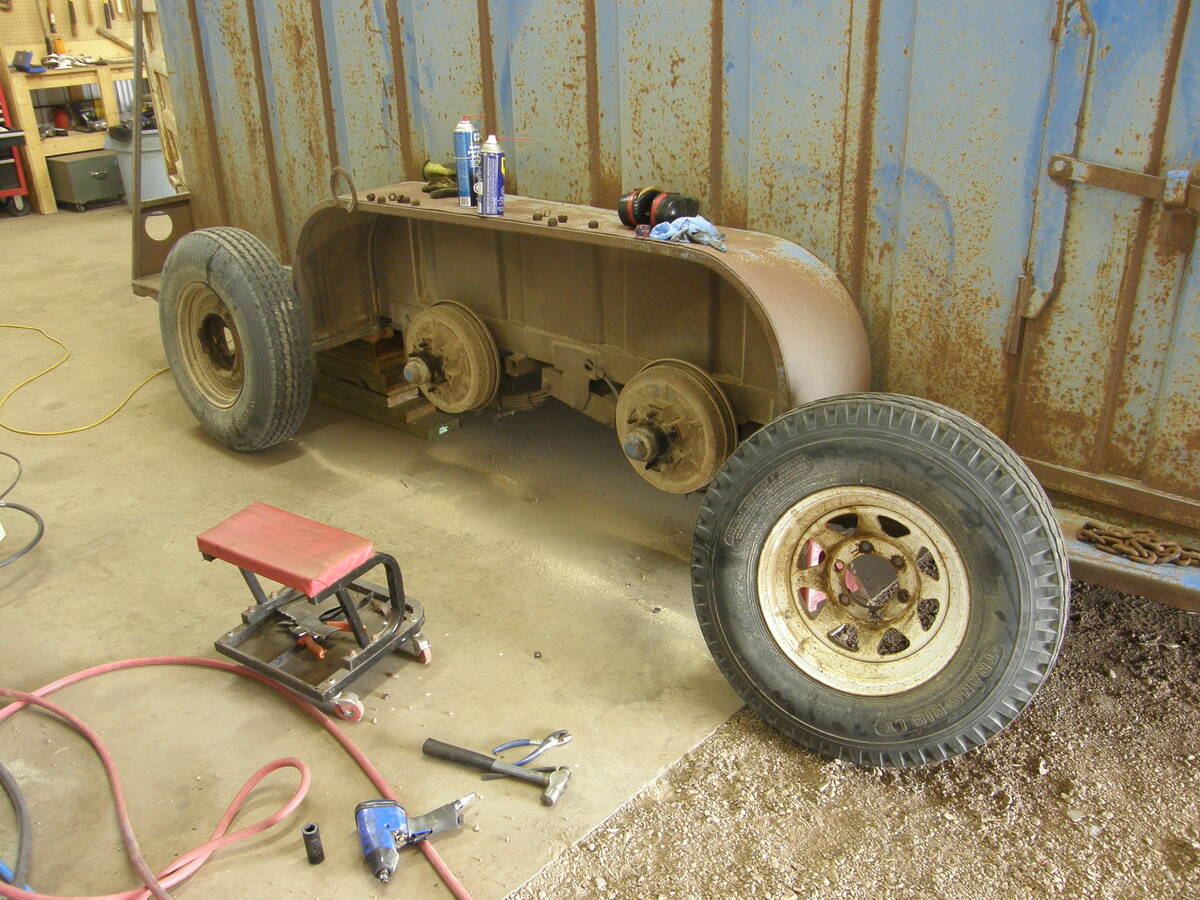Every farmer has dealt with the frustration of a machine breakdown during peak seasons that stops field work in its tracks.
But how much more frustrating would it be to have the farm truck put out of service on the roadside for an unrepaired defect that won’t pass a random spot check by police?
Every year authorities organize pop-up roadside inspections to check heavy trucks for safety violations. And although farm trucks and drivers get a variety of exemptions from some regulations commercial carriers must follow, passing a roadside safety inspection isn’t typically one of them.
Read Also

How to overhaul electric trailer brakes
Let’s look at what you’ll find when you pull the wheel hubs off your livestock trailer, and what you need to consider to keep those electrical brakes in good working condition.
So how do you get through a spot check and avoid a ticket — or worse?
The Commercial Vehicle Safety Alliance (CVSA) was set up several years ago to standardize equipment requirements and inspection procedures across Canada and the U.S. Most officers checking trucks will be certified by CVSA. Inspections will be carried out in a similar way no matter the province where they occur, although exact regulations and some exemptions vary a little.
“We have level one, two and three inspections,” CVSA roadside inspection specialist Jeremy Disbrow said during an information webinar in May. “A level one is we’re looking at driver credentials, their hours-of-service status, and it’s a complete vehicle inspection. It includes all the components underneath the vehicle as well. And it focuses also on cargo securement.
“A level two inspection involves everything except going underneath the vehicle. It’s called a walk-around inspection, basically. A level three is just a driver-only inspection.”
Farm truck drivers will usually be exempt from the hours-of-service regulation.
First impressions
The first step in acing a spot check inspection is to do a thorough daily pre-trip inspection on the truck before starting work. That ensures you find any defects before heading out onto the road — and repair them.
Officers doing inspections get an overall impression of a driver and truck pretty quickly. And first impressions are important, so having a clean, well-maintained truck will help.
“If you have your vehicle in order and you’re ready for the day, you’re likely to get a clean inspection,” Disbrow says. “Quite frankly, you can tell a lot within the first 30 seconds of interaction. A driver that seems to be prepared shows a level of professionalism.”
Drivers must make a written record of daily pre-trip inspections, but some farm truck drivers are exempt from needing to create a written report.
Them’s the brakes
One of the defects most commonly found at inspections is brake problems. Though nearly all modern heavy trucks with air brakes use automatic slack adjusters, some may not realize a driver still has a procedure to follow to ensure they are set correctly.
Making six full brake applications and holding them momentarily with system air pressure above 90 pounds per square inch is required for automatic slack adjusters to set up correctly. Failure to do this at the start of each day may mean push rod travel will exceed the maximum limit, putting brakes out of adjustment.
Making a full-service brake application and holding it for one minute to measure air loss is a key pre-trip test. Single-unit trucks cannot lose more than three p.s.i. in that time. Semi-trailer trucks with one trailer cannot lose more than four.
There are other tests as well, such as ensuring the tractor protection valve closes at no less than 20 p.s.i. when the trailer lines are disconnected.
Farmers who’ve never had to take additional training to drive a Class 3 truck with air brakes may want to pick up a copy of their provincial air brake manual to ensure they understand the full test procedure, and make sure they know how the system works. Pre-trip regulations typically require a driver to have a reasonable working knowledge of the systems they’re checking.
“Last year the top out-of-service violation we had was for brakes,” Disbrow says. “Some of the other common violations were tires and lighting devices, things like that.”
Finally, even if you’re in a hurry and annoyed at the delay, curb your attitude when pulled into a roadside inspection. Being rude and abrasive won’t help you in the least.
“Something we look for is the professionalism of the driver and their attitude,” Matthew Austin of the Saskatchewan Highway Patrol said during the webinar. “That’s immediately noticeable as soon as we walk up and say hello. Things we’re looking for — do they have their proper documentation; do they know what documentation they’re giving us? Do they understand the expectations of the inspection? That all builds up to a good interaction during the inspection.
“The more organized the driver is, the smoother the inspection goes. It speeds it up.”















